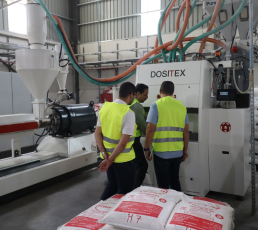While PP&E is depreciated, http://mybb2.ru/list.php?fid=48232 are amortized (except for goodwill). Generally, intangible assets are simply amortized using the straight-line expense method. (a) Purchased intangible assetsThe initial recognition rules of intangible assets under IAS 38 are relatively simple. If an asset has been purchased, it will be recognised initially at cost, as demonstrated in the above example of Entertain Co. IAS® 38 Intangible Assets is one of the key standards in the Financial Reporting (FR) exam, covering how companies should account for intangible assets. A well-prepared candidate needs to be able to understand and explain the key principles of the standard, in addition to preparing calculations.
- If more companies could capture more of the productivity- and growth-driving power of intangibles, these assets could play a major role in the bounce-back of companies and economies from the COVID-19 crisis.
- The Merriam-Webster dictionary defines intangible as something that is “not capable of being touched or not having physical substance.” Intangible assets are just that; assets that have value but no physical substance.
- IAS 38 was revised in March 2004 and applies to intangible assets acquired in business combinations occurring on or after 31 March 2004, or otherwise to other intangible assets for annual periods beginning on or after 31 March 2004.
- Intangible Assets may give your business future economic benefits in a variety of ways.
- This reflects, in part, Microsoft’s greater appetite for acquisitions.
Similar to the principles of IAS 16 Property, Plant and Equipment there are two major models for accounting for intangible assets. These are the cost model and the revaluation model, and the methods used in the application are very much in line with the IAS 16 methodology. It is more difficult to determine the useful life of an intangible asset than a tangible asset. For intangible assets with an indefinite life that were acquired rather than created by your business, the amortization period should be 15 years, per the IRS. A simple replacement cost model for acquired software that adjusts for obsolescence and takes into account the tax impact of the asset’s amortization is shown below. It weighs the tax impact of the asset’s amortization, which is most relevant if the intangible asset is considered within the framework of the valuation of an overall enterprise.
Identifiable and Unidentifiable Intangible Assets
Another major asset you cannot physically touch could be an investment in shares in a company. All of these are examples of assets but would be accounted for in accordance with IFRS 9 Financial Instruments as financial assets and not http://www.shopos.ru/docs/read2/3284.htm under IAS 38. During the pandemic, when social distancing necessitated a shift toward remote working and large-scale and much faster digitization, investment in intangible assets accelerated once again. In some European economies, the increase in the intangibles share was larger—2.8 percentage points in France, and 1.9 percentage points in the United Kingdom, according to national statistical agencies. Anything your company develops that holds value, such as a specific design that your company created or a software program that was developed, are also considered intangible assets. There is a presumption that the fair value (and therefore the cost) of an intangible asset acquired in a business combination can be measured reliably.
These assets often stem from innovation, creativity or a company’s strategic initiatives which make them unique and hard to replicate. Ignoring these assets can result in a considerable underestimation of a company’s real value. Working with a financial advisor can give you a good idea of how the assets at your company or the ones you personally own could be valued. Accordingly, you need not recognize the internally generated intangible assets as intangible assets on your balance sheet. As per the Accounting Standard, you can only record the intangibles acquired in a Business Combination or purchased from outside as Intangible Assets on your Balance Sheet.
Which of these is most important for your financial advisor to have?
Amortization instructions to file business taxes are in Publication 535. CFA Institute is the global, not-for-profit association of investment professionals that awards the CFA® and CIPM® designations. We promote the highest ethical standards and offer a range of educational opportunities online and around the world. CFA Institute members are empowered to self-determine and self-report professional learning (PL) credits earned, including content on Enterprising Investor. Ask a question about your financial situation providing as much detail as possible. Our mission is to empower readers with the most factual and reliable financial information possible to help them make informed decisions for their individual needs.
Therefore, companies often choose to use CIV since this method attempts to find a value for intangible assets in a way that isn’t linked to market value. In contrast, intangible assets that have been acquired are shown on the balance sheet. Overall, a company’s ability to give accurate valuations to its intangible assets is a good indicator of its ability to manage the business successfully. Intangible assets also have much to offer by way of competitive advantage since they help create perceived customer value. This comes into play when a business is bought or sold, as intangible assets add value beyond the book value of the tangible assets.
XRB introduces research on intangibles at IFASS meeting
Finance Strategists is a leading financial education organization that connects people with financial professionals, priding itself on providing accurate and reliable financial information to millions of readers each year. It represents the value today of the excess earnings of a particular http://dpgo.ru/katalog/motoshlemy/by,product_name.html enterprise. Excess earnings represent earnings above the normal earnings of an industry. A franchise is a right to use a formula, design, or technique or the right to conduct business in a certain territory. Franchises can be granted by either a business enterprise or a governmental unit.
If a patent results from successful research and development efforts, its cost is only the legal or other fees necessary to patent the invention, product, or process. For example, advertising and promotion campaigns and training programs provide future benefits to the firm. SmartAsset Advisors, LLC (“SmartAsset”), a wholly owned subsidiary of Financial Insight Technology, is registered with the U.S. Companies that are being sold often prefer to use calculated intangible value, or CIV, rather than simply deducting book value from market value, since this gives a more robust valuation. Non-identifiable assets, or those without a definite lifespan, can be the trickiest to value.
Amendments under consideration by the IASB
Depreciation is the process of allocating a portion of the cost of an asset over the years as it is used to generate revenue for the company. Depreciation helps to reflect the wear and tear on tangible assets during their lifetime. Several industries have companies with a high proportion of intangible assets. Furthermore, you need to amortize such assets over their useful life once recognized as intangible assets. This is unlike Property, Plant, and Equipment which is depreciated over its useful life.
- If a business creates an intangible asset, it can write off the expenses from the process, such as filing the patent application, hiring a lawyer, and paying other related costs.
- IAS 38 includes additional recognition criteria for internally generated intangible assets (see below).
- Fixed assets are always considered tangible assets as they have physical dimensions and presence.
- Intangible assets add to a company’s possible future worth and can be much more valuable than its tangible assets.
This is because all the research and development costs expended to develop the patent, including those in the year the patent is obtained, must be written Off to expense in the period incurred. Accountants are not concerned with the lack of physical form of assets such as checking account balances, receivables, investments in securities, and prepaid expenses. But in a global economy where value increasingly comes from knowledge, and not just physical assets, understanding how companies use intangibles is key. Intangible assets are classified according to their lifespan as either identifiable, with a known lifespan, or non-identifiable, with an indefinite lifespan. Intangible assets are classified in terms of their useful lifespan as either identifiable, with a finite lifespan, or non-identifiable, with an indefinite lifespan.
The research agenda on these trends that I describe in more detail below includes several coauthors, principally Nicolas Crouzet, and more recently, Andrea Eisfeldt and Dimitris Papanikolaou. Remember, this recognition criterion applies to both self-created or intangible assets acquired externally. However, there exist additional criteria for self-created or internally generated intangible assets. These are the types of intangible assets that generate economic benefits for your business for a limited period of time. Accordingly, you need to amortize the cost less residual value of such assets systematically over their useful life. Unidentifiable intangible assets are those that cannot be physically separated from the company.















